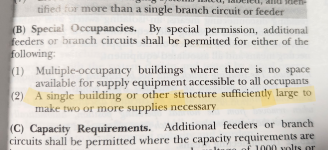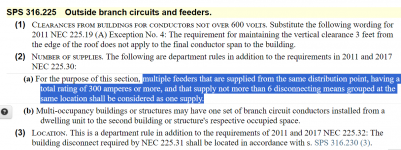P.A.Lin-Z
Member
- Location
- Jackson Tennessee
- Occupation
- Electrical contractor
I have a huge house that we are wiring.
There are 3–200-amp single phase panels in separate location throughout the house.
The service is NOT attached to the house and is located about 150 feet in front of the house by the driveway in the location of the transformer.
There will be a CT meter, a CT junction box, and 3–200-amp service rated ATS's for a generator system.
Will there still have to be service disconnects grouped and located on the house? We are currently under 2017 NEC.
There are 3–200-amp single phase panels in separate location throughout the house.
The service is NOT attached to the house and is located about 150 feet in front of the house by the driveway in the location of the transformer.
There will be a CT meter, a CT junction box, and 3–200-amp service rated ATS's for a generator system.
Will there still have to be service disconnects grouped and located on the house? We are currently under 2017 NEC.


